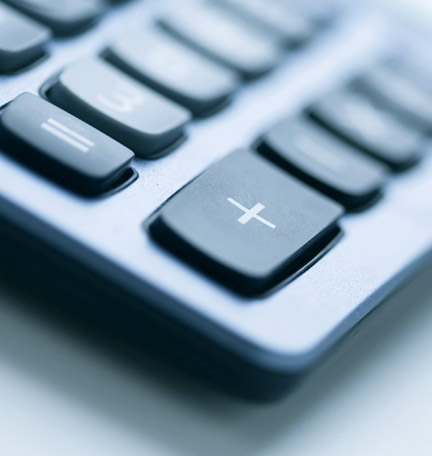4 Steps to Take Charge of Your Finances
You’ve got so much going on in your life. So, how do you find time to take charge of your finances? Here’s a four-step plan to responsible money management, for even the most time challenged.
Staying on top of your multiple financial accounts -- from checking to savings to credit cards – can be a lot to handle, especially when you're juggling all of your other daily responsibilities. Yet monitoring your finances on a regular basis can help you stay up to date on account balances and help you reach your financial goals.
Many accounts offer digital features to help streamline the process of keeping track of your accounts. Here are some of the ways you can make monitoring your finances more seamless.
1. Set Up a Budget
Budgeting gives an overview of your monthly income and expenditures – you can see exactly where your money goes, and take steps to ensure your spending is aligned with your financial goals.
You can use your bank's budgeting online financial tools to make your budget efforts have even greater impact. You can tag certain expenses or spending targets, such as food or entertainment, so you can get a better sense of how much you’re actually spending in a given month – and whether you need to reduce or adjust your spending.
2. Automate Your Finances
Direct deposit of your paychecks and automatic bill pay for reoccurring monthly bills are an important part of managing your accounts. Auto pay ensures recurring monthly expenses are paid on time, so you avoid late payment fees. Auto pay is best suited for monthly bills with amounts that do not change or that do not vary much from month to month.
If you need your account to help you put aside savings, you can set up automatic transfers to set aside funds. That will help you build an emergency savings fund or bigger-picture savings goals, like a new vehicle or a house down payment.
3. Monitor Your Accounts
Once you’ve automated your bills, the next step is monitoring your expenses each month. You need to be aware of your account balances to avoid overdraft fees and any unauthorized charges to your accounts. Automated text alerts can notify you if your balance drops below a certain amount or remind you of any upcoming automatic payments.
Even though you might rely upon digital features to monitor accounts, it’s important to maintain a physical transaction register to make sure that all of your expenditures are accurately reflected and reconciled. “I recommend tracking each purchase made in a transaction register,” says Elise Carr, a Branch Manager at Regions Bank. “Anyone who is new to finance could accidentally overdraft — it’s important to be very conscious about what you spend versus what’s coming in.”
It’s also important to check for any unauthorized or unfamiliar charges. Catching a questionable credit card purchase or debit early allows you to report it to your bank or credit card company as soon as possible (many banks require customers to report fraudulent activity within 60 days). “I recommend checking accounts every single day, especially with all the types of fraud that can go on,” Carr says.
4. Use Features to Track Bigger Picture Goals
In addition to monitoring your accounts, you can also use online features to monitor multiple accounts to get a bird's-eye view of your overall financial picture. Many bank accounts allow you to add outside accounts, such as investment or retirement accounts, so that you can track your savings to make sure you are on track to meet your larger financial goals.






